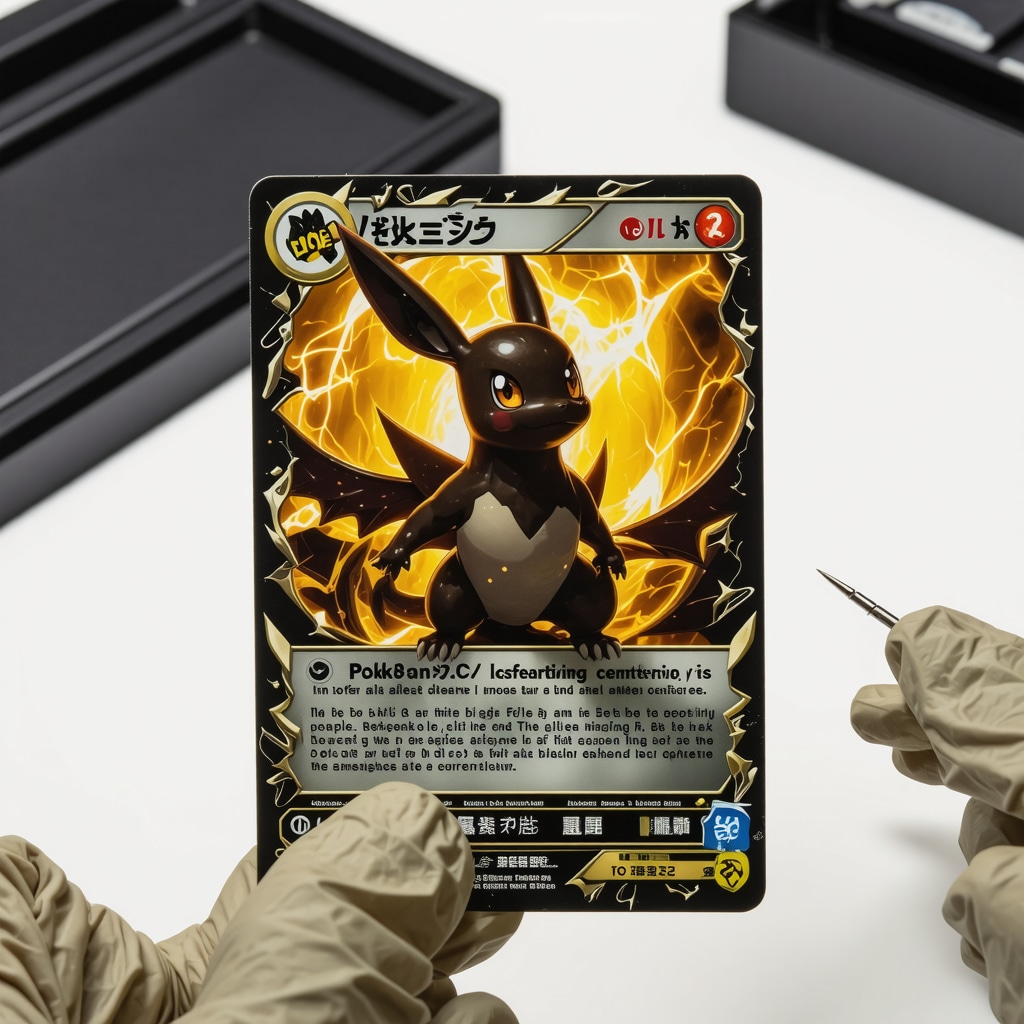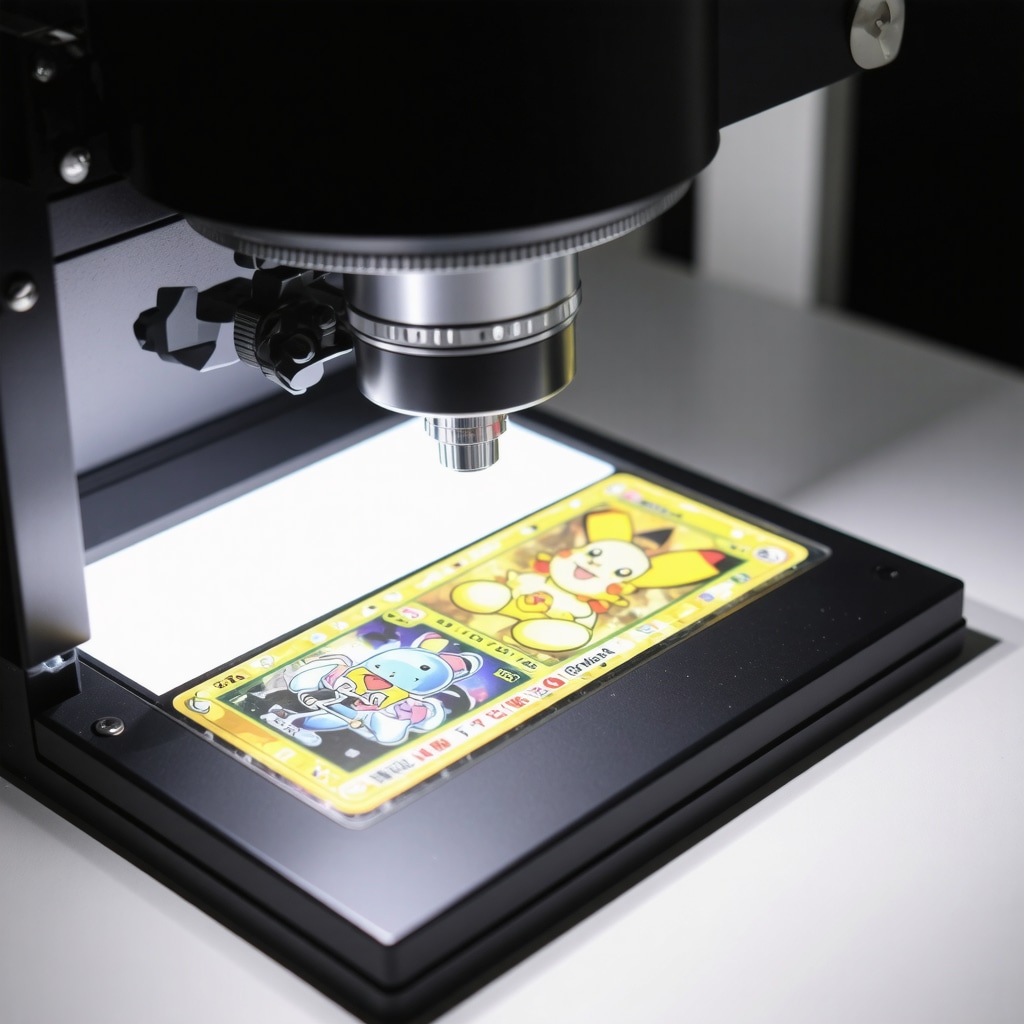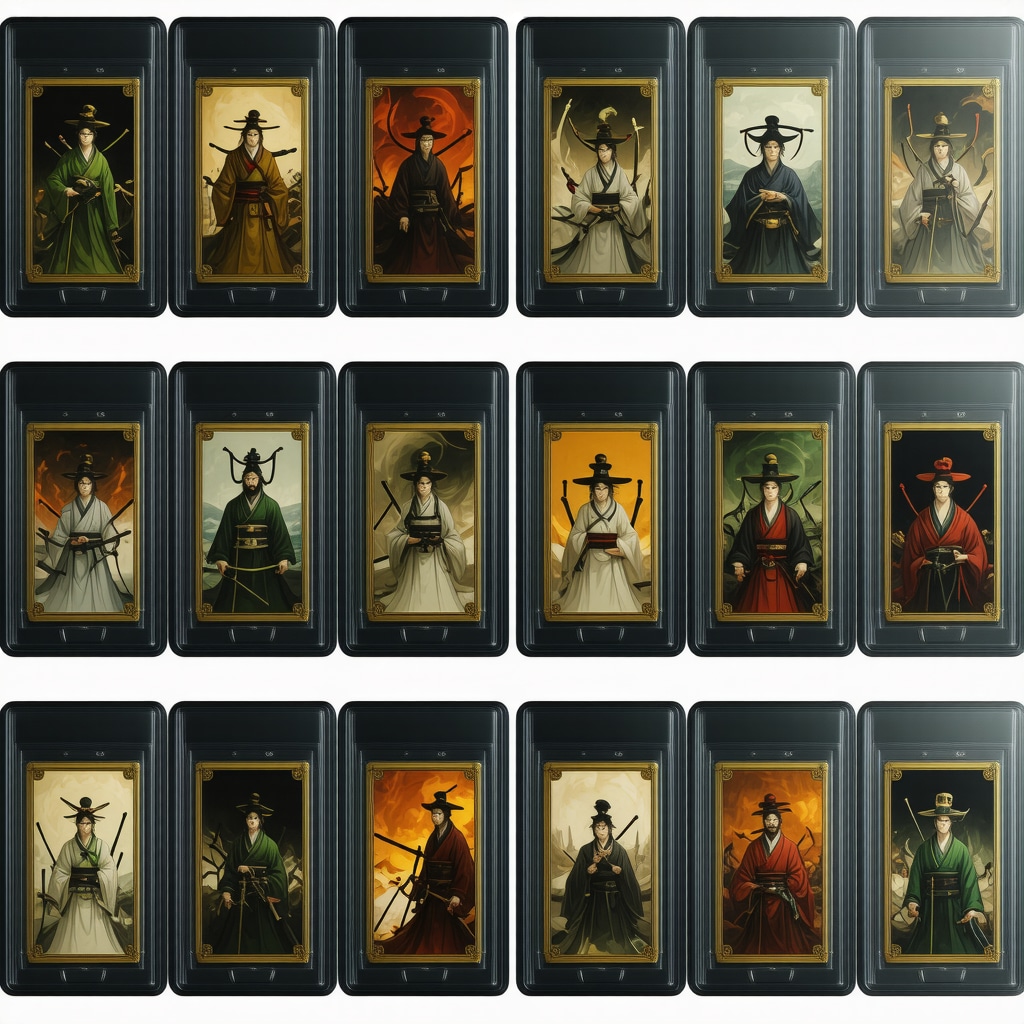Unearthing the Rarity: Why CGC Graded Japanese Card Sets Command Collector Obsession
For collectors and investors alike, the allure of CGC Japanese card sets lies not just in nostalgia but in the intricate dance between scarcity, condition, and cultural significance. These cards, often encompassing iconic creatures and trainers, achieve their pinnacle of value when graded highly by CGC — a certification that speaks volumes about a card’s authenticity and preservation. Understanding which Japanese sets boast the highest concentration of CGC Gem Mint 10 or Pristine 10 cards unlocks a realm of savvy collecting and investment potential.
Legendary Lineups: Spotlight on Top CGC Japanese Card Sets with High-Grade Rarities
Among the myriad Japanese Pokémon releases, certain sets stand apart for their frequent appearance in CGC’s top tiers. The Japanese Base Set cards are perennial favorites, revered for their foundational status and the presence of elusive holo rares. Collectors chase CGC 10 grades within these sets to secure cards with pristine edges, flawless surfaces, and perfect centering.
Equally coveted are the promo special edition cards, which often feature limited print runs and unique artwork. These promos, when graded Gem Mint 10, become jewels in any collection, reflecting both artistry and rarity.
How Does CGC Grading Elevate the Value of Japanese Card Sets?
CGC grading meticulously assesses surface quality, edges, corners, and centering — factors critical in the Japanese card market where preservation standards are exceptionally high. A CGC 10 card signals perfection to collectors and investors, often multiplying the card’s market value exponentially. This precise grading standard mitigates risk, offering a trusted benchmark for authenticity and condition that fuels confident buying and selling decisions.
Collectible Craftsmanship: The Intricacies Behind High-Grade Japanese Card Sets
Japanese cards are renowned for their vibrant foiling techniques and intricate artwork, which makes achieving a Gem Mint 10 grade particularly challenging. Even microscopic surface imperfections can affect grading. This rarity inherently elevates the desirability of CGC 10 cards from Japanese subsets, such as the Full Art Trainer Secret Rare cards, which combine artistic excellence with scarcity.
Collectors who understand these nuances often develop a keen eye for spotting cards with the potential to achieve pristine grades, leveraging resources like insider tips on identifying flawless cards before submission.
Investment Insights: Navigating the Market of High-Grade Japanese CGC Cards
The market for CGC Gem Mint 10 Japanese cards is dynamic, with values influenced by card rarity, player popularity, and set prestige. For example, vintage holo rares from early Japanese releases often outperform their English counterparts due to limited print runs and cultural appeal. Strategic acquisition from trusted sources can significantly enhance portfolio value, as detailed in reputable investment analyses like those found on PokéBeach, a respected hub for Pokémon market trends.
To maximize returns, collectors are advised to monitor emerging trends and focus on sets with proven track records, such as the top CGC gem mint 10 Japanese cards recommended for 2025. This approach blends passion with prudence.
Engage with the Community: Share Your Experiences and Discover More
Have you encountered rare CGC 10 Japanese card finds or developed strategies to secure high-grade collectibles? Share your stories and insights in the comments below to contribute to this vibrant collector community. For personalized advice or inquiries, feel free to contact us — our experts are ready to assist your collecting journey.
My Personal Journey: Spotting the Needle in the Haystack of CGC 10 Japanese Cards
Reflecting on my own experience hunting for CGC Gem Mint 10 Japanese Pokémon cards, I realized it’s as much about patience as it is about knowledge. Early on, I’d get excited about any shiny holo, only to learn the hard way that surface imperfections or off-centering would dash my hopes of a perfect 10 grade. Over time, I developed a checklist to evaluate cards before submission: examining edges under magnification, checking for even foiling, and assessing centering with rulers and guides. This hands-on approach has saved me both time and submission fees, sharpening my eye for those rare flawless gems.
Why Do Collectors Value CGC Gem Mint 10 Japanese Cards So Highly?
It’s not just about the pristine condition; it’s the cultural resonance and scarcity combined. Japanese cards often feature unique artwork and printing nuances that English versions lack, adding a layer of exclusivity. For example, the CGC Gem Mint 10 Japanese Pikachu cards have a special place in many collectors’ hearts due to their rarity and vibrant design.
Moreover, as noted in a detailed market study by PokéBeach, the demand for CGC 10 Japanese cards has outpaced supply in recent years, driving prices up and solidifying their status as investment-grade assets. This trend reflects a growing appreciation for the craftsmanship and legacy embodied within these cards.
How Can You Spot a Potential CGC Gem Mint 10 Japanese Card Before Submission?
Ask yourself: Is the centering nearly perfect? Are the edges sharp and free from whitening? Does the surface shimmer without scratches or print defects? Answering these questions honestly can save you from disappointment. Leveraging community knowledge forums and guides like insider tips on spotting perfect 10 cards can also dramatically improve your selection process.
Practical Tips: Protecting and Preserving Your Pristine Cards
Once you’ve secured a CGC 10 graded card, proper storage is paramount. I personally use acid-free sleeves and hard plastic cases to shield cards from light, moisture, and handling damage. Even slight fingerprints or exposure to UV light can diminish a card’s value over time. Regularly rotating your displayed cards also helps avoid prolonged exposure to environmental risks.
For those looking to deepen their collection or increase the value of existing cards, exploring resources like how to increase the value of CGC 10 Japanese vintage holo cards can offer actionable advice rooted in real collector experiences.
Joining the Conversation: What Are Your CGC 10 Stories?
Have you ever experienced the thrill of uncovering a CGC Gem Mint 10 Japanese card that exceeded your expectations? Or maybe you’ve developed a unique strategy for identifying and preserving these treasures? I’d love to hear your stories! Sharing experiences helps our community grow wiser and more connected. Drop your thoughts and tips in the comments, or explore more expert insights by visiting our contact page to get personalized guidance on your collecting journey.
Decoding the Science of CGC Grading: Beyond the Surface
While many collectors focus on the visible aspects of CGC Gem Mint 10 Japanese cards, the grading process delves into microscopic details that can make or break a card’s grade. CGC graders utilize advanced lighting techniques and magnification tools to detect minute print inconsistencies, subtle edge wear, or faint surface abrasions invisible to the naked eye. This forensic approach means that even cards that appear flawless can fall short due to imperceptible flaws discovered under rigorous inspection.
Understanding this helps collectors appreciate why some sought-after cards remain elusive in CGC 10 condition and underscores the importance of meticulous handling and pre-grading evaluation.
What Are the Most Overlooked Factors That Affect a Japanese Card’s CGC Gem Mint 10 Grade?
Aside from the well-known criteria of centering, edges, corners, and surface, subtle issues often escape initial scrutiny. These include microscopic print defects such as “color bleed,” faint indentations from manufacturing, or slight variations in foiling texture that appear only under certain angles. Experienced collectors also note that humidity and temperature changes can subtly warp card surfaces or cause foil separation over time, which jeopardizes a pristine grade. Therefore, environmental control is as critical as physical protection.
Adopting tools like a lightbox for centering checks and using anti-static gloves during card handling can significantly reduce risks of damage and improve pre-submission confidence.
Preservation Protocols: Advanced Strategies to Maintain CGC 10 Condition Over Decades
Preserving your CGC Gem Mint 10 Japanese cards requires a multifaceted approach, combining environmental management, physical protection, and regular condition audits. Storing cards in inert materials—such as polyethylene or polypropylene sleeves—prevents chemical interactions that lead to yellowing or degradation. Avoiding PVC-based products is essential, as they emit acids over time that can irreversibly damage card surfaces.
Furthermore, controlled climate storage with consistent temperature (around 70°F or 21°C) and relative humidity (between 40-50%) prevents warping and mold growth. Specialized storage safes equipped with UV-filtering glass and silica gel packs provide the ideal environment, especially for high-value CGC 10 Japanese cards that demand long-term preservation.
Analyzing Market Dynamics: How CGC 10 Japanese Cards Influence Portfolio Diversification
From an investment perspective, CGC Gem Mint 10 Japanese cards represent a niche asset class with low correlation to traditional markets, offering portfolio diversification benefits. Their scarcity and growing global demand, particularly in Asia and North America, drive steady appreciation. According to a detailed market analysis by PokéBeach’s 2024 Market Trends Report, CGC 10 Japanese sets have outperformed many English-graded counterparts, primarily due to limited print runs and collector preference for original Japanese artwork.
Investors should consider liquidity factors and emerging set popularity, as newer CGC 10 Japanese releases with innovative artwork and limited editions have shown high short-term returns while vintage gems maintain long-term value. This balance offers strategic opportunities for both collectors and portfolio managers.
Unlocking Insider Knowledge: Leveraging Community Wisdom and Expert Resources
Engaging with experienced collectors and grading experts can exponentially enhance your understanding and success rate in acquiring CGC Gem Mint 10 Japanese cards. Forums and specialized Discord channels provide real-time insights on grading trends, submission timing, and reputable sellers. Additionally, subscribing to newsletters from trusted sources like Pristine Pokémon Cards ensures access to curated content and expert analysis.
Remember, the value of CGC 10 Japanese cards lies not only in their condition but also in informed acquisition and preservation strategies. Continuous learning and community engagement empower collectors to stay ahead in this competitive market.
Take the Next Step: Refine Your Card Grading and Preservation Techniques Today
Ready to elevate your collecting game? Explore our detailed guides on advanced card evaluation methods and state-of-the-art preservation tools designed specifically for Japanese CGC Gem Mint 10 cards. Visit our contact page to connect with our experts and receive personalized recommendations tailored to your collection’s unique needs. Don’t leave your prized cards’ future to chance—master the art and science of CGC grading and preservation now.

Decoding the Subtle Art of Flawless Japanese Card Grading
Beyond the fundamental criteria of centering, edges, corners, and surface integrity, CGC grading incorporates a forensic-level analysis that distinguishes an exceptional Gem Mint 10 from near-perfect contenders. Factors such as microscopic print anomalies, subtle foiling inconsistencies, and even paper stock variations contribute critically to grading outcomes. These nuanced elements are often imperceptible to the naked eye but become decisive under the specialized lighting and magnification techniques employed by CGC graders. For seasoned collectors, understanding these hidden determinants is paramount to refining pre-submission evaluations and optimizing investment strategies.
Integrating Environmental Science into Preservation Protocols
Preserving CGC Gem Mint 10 Japanese cards transcends conventional storage methods, demanding scientific precision in environmental control. Research into archival-grade materials reveals that polyethylene and polypropylene sleeves outperform PVC variants by eliminating acid migration risks, which can catalyze long-term degradation. Furthermore, maintaining stable ambient conditions—specifically 21°C temperature with 40-50% relative humidity—mitigates risks of warping, mold proliferation, and foil delamination. Incorporating UV-filtering enclosures and desiccants like silica gel further fortifies cards against photodegradation and moisture intrusion, ensuring longevity of pristine condition over decades.

What Cutting-Edge Tools and Techniques Can Experts Employ to Enhance CGC 10 Submission Success?
Advanced collectors and graders increasingly leverage digital lightboxes, high-resolution magnifiers, and anti-static gloves to scrutinize card attributes pre-submission. Digital centering measurement tools enable precision alignment verification, while monochromatic light sources reveal concealed surface defects and print anomalies. Additionally, engaging with specialized online communities and forums provides access to real-time grading trend data and submission timing strategies, which can substantially elevate the likelihood of achieving a coveted Gem Mint 10 grade.
Market Intelligence: Leveraging Authoritative Data for Strategic Acquisition
Informed investment decisions hinge on integrating comprehensive market analytics with collector instincts. The PokéBeach 2024 Market Trends Report offers granular insights into pricing trajectories, liquidity considerations, and emerging set popularity specific to CGC Gem Mint 10 Japanese card segments. Utilizing such authoritative resources empowers collectors to anticipate market shifts, identify undervalued gems, and calibrate acquisition timing to maximize portfolio performance.
Engage Further: Elevate Your Expertise and Collection Today
Embark on a journey of mastery in CGC Gem Mint 10 Japanese card collecting by leveraging the advanced techniques and market insights shared herein. Connect with our team of experts via the contact page for tailored guidance designed to optimize your collection’s condition and value. Don’t merely collect—curate with precision and foresight to unlock the pinnacle of Pokémon card investment potential.
Frequently Asked Questions (FAQ)
What makes CGC Gem Mint 10 grading so important for Japanese Pokémon cards?
CGC Gem Mint 10 represents the pinnacle of card condition, indicating flawless centering, edges, corners, and surface quality. For Japanese cards, which often feature intricate foiling and unique printing nuances, achieving this grade is especially challenging and rare. This certification assures collectors and investors of a card’s authenticity and pristine preservation, significantly enhancing its market value and desirability.
How can I identify a Japanese card with potential for a CGC 10 grade before submitting it?
Key indicators include near-perfect centering, sharp and clean edges without whitening, flawless corners, and an immaculate surface free from scratches or print defects. Tools such as digital lightboxes, magnifiers, and centering guides can aid evaluation. Leveraging community-shared insights and expert tips further refines selection, reducing submission risks and costs.
Why do Japanese card sets sometimes outperform English versions in value and collectability?
Japanese sets often have lower print runs, unique artwork, and cultural significance that resonate with collectors globally. The foiling techniques and printing quality also differ, offering exclusivity. Combined with the scarcity of CGC 10 graded cards from these sets, this drives higher demand and premium pricing compared to many English counterparts.
What are the most overlooked factors that affect CGC grading beyond the standard criteria?
Microscopic print anomalies such as color bleed, faint indentations from manufacturing, or subtle foiling texture variations can affect grades. Environmental factors like humidity and temperature fluctuations may cause warping or foil separation over time. Using anti-static gloves and conducting pre-submission audits under specialized lighting can minimize these risks.
How should I best preserve my CGC 10 Japanese cards to maintain their grade long-term?
Store cards in acid-free polyethylene or polypropylene sleeves and hard plastic cases to prevent chemical degradation. Maintain stable ambient conditions around 21°C (70°F) with 40-50% relative humidity, and protect cards from UV light exposure using filtered enclosures. Regularly audit card condition and avoid prolonged handling to preserve their pristine state.
Are CGC 10 Japanese cards a good investment and how do they fit in a diversified portfolio?
Yes, CGC Gem Mint 10 Japanese cards represent a niche asset class offering low correlation to traditional financial markets. Their scarcity, cultural appeal, and growing global demand contribute to steady appreciation. Including them in a diversified portfolio can enhance overall risk-adjusted returns, especially when balanced between vintage and contemporary high-grade cards.
Where can I find reliable market data and trends for CGC 10 Japanese cards?
Reputable sources include specialized Pokémon market analysis platforms like PokéBeach, which provide granular insights on pricing, liquidity, and emerging set popularity. Industry reports and collector forums also offer real-time trend data, while subscription-based newsletters deliver curated expert analysis aiding informed decision-making.
What advanced tools do experts use to improve CGC 10 submission success rates?
Experts employ digital lightboxes to evaluate centering precisely, high-resolution magnifiers to detect subtle surface defects, and anti-static gloves to prevent contamination. Monochromatic lighting reveals hidden print anomalies. Additionally, engaging with grading-focused communities helps optimize submission timing and strategies.
How can engaging with the collector community enhance my CGC 10 Japanese card journey?
Interacting with seasoned collectors and graders provides access to insider knowledge, grading trend updates, and trusted seller recommendations. Sharing experiences fosters collective learning, helping newcomers avoid common pitfalls and enabling experts to discover new market opportunities. Community forums and Discord channels are valuable resources for continuous growth.
Is it worth submitting every potentially perfect Japanese card for CGC grading?
Not necessarily. Given the stringent CGC criteria and associated submission costs, it’s prudent to pre-evaluate cards rigorously. Only submit those meeting near-flawless standards to maximize the chance of attaining Gem Mint 10 grades and protect your investment from costly rejections or lower grades.
Trusted External Sources
- PokéBeach (https://www.pokebeach.com/): A leading platform offering comprehensive market trend reports, pricing analytics, and expert commentary specific to Pokémon card grading and investment, including CGC 10 Japanese cards.
- Certified Guaranty Company (CGC) Official Resources (https://www.cgccomics.com/): Authoritative grading standards, submission guidelines, and scientific insights into grading processes, essential for understanding the technical rigor behind CGC 10 evaluations.
- Pokémon TCG Research Publications (e.g., Journal of Collectible Card Studies): Academic and industry papers analyzing print variations, preservation science, and market dynamics relevant to Japanese Pokémon card collecting and grading.
- Archival Science Institutions (e.g., The Image Permanence Institute): Provides scientific research on optimal preservation materials and environmental controls crucial for maintaining card condition over extended periods.
- Collector Community Forums (e.g., PokéCollector, Reddit r/pkmntcg): Rich repositories of firsthand experiences, grading tips, and evolving market intelligence contributed by active collectors and grading experts worldwide.
Conclusion
Mastering the art of collecting and investing in CGC Gem Mint 10 Japanese card sets requires a harmonious blend of meticulous evaluation, scientific preservation, and market savvy. These cards embody a unique intersection of cultural legacy, artistic craftsmanship, and rare perfection that commands premium valuation. By leveraging advanced grading insights, employing cutting-edge tools, and engaging with trusted expert resources, collectors can confidently navigate the nuanced landscape of Japanese Pokémon cards. Maintaining pristine condition through controlled environments and informed handling further safeguards their investment potential.
Whether you are a passionate enthusiast or a strategic investor, embracing these expert strategies unlocks the true value and joy inherent in CGC 10 Japanese card collecting. Share your experiences, deepen your knowledge, and explore our expert guides to elevate your collection to new heights. The pinnacle of Pokémon card mastery awaits—embark on your journey today.
